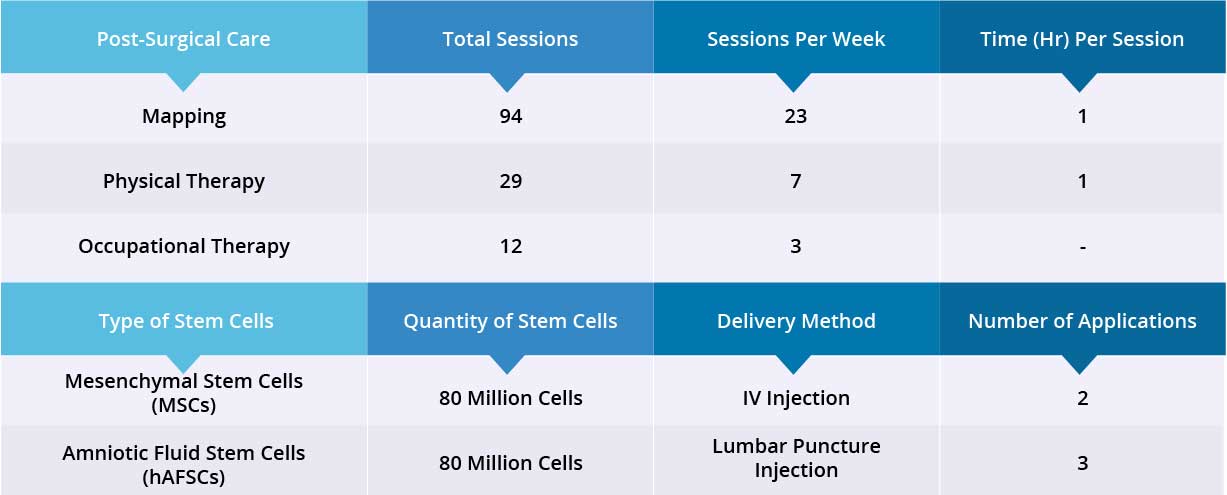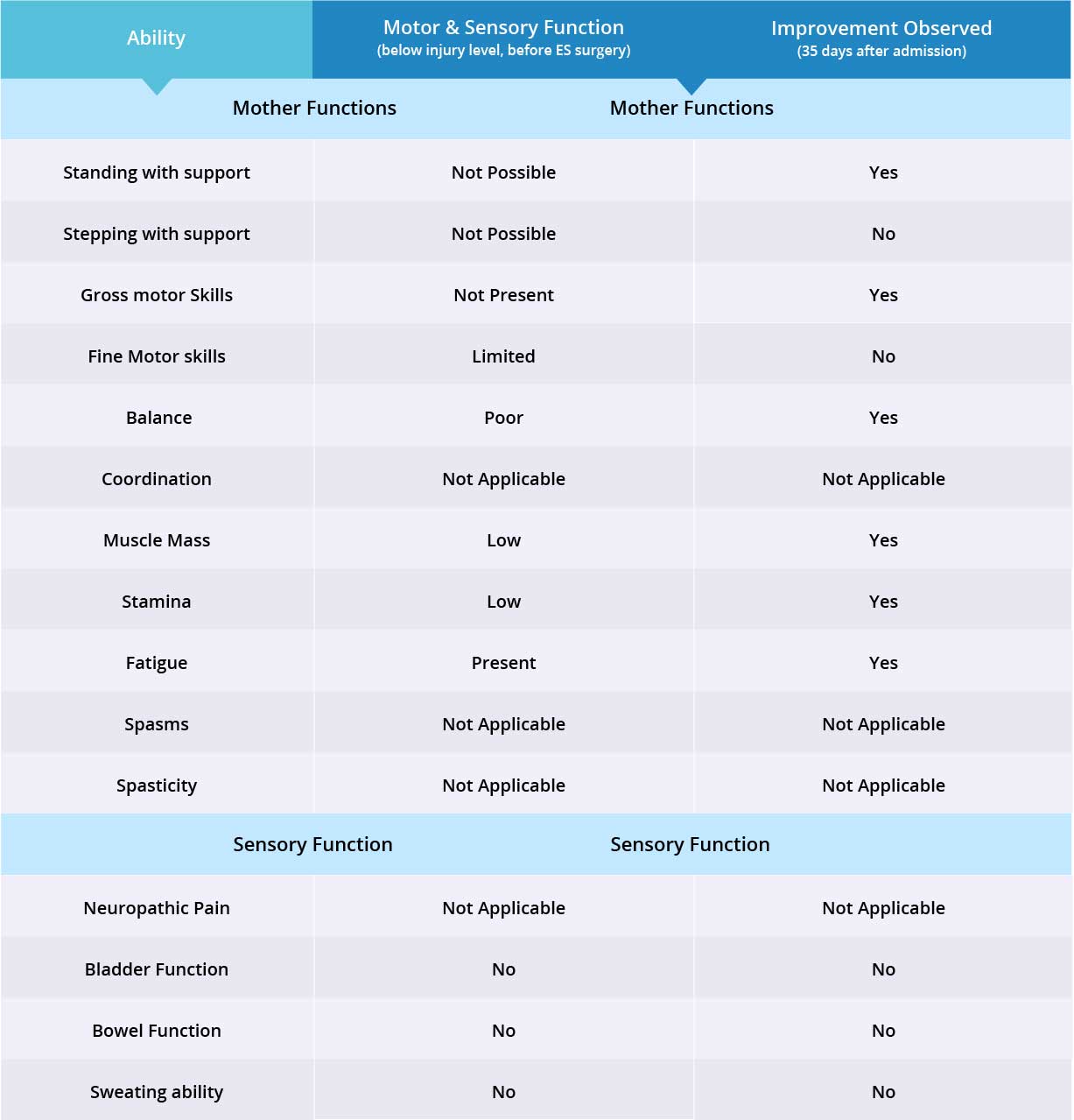Case Study
Patient L,
Male, American
Table of Contents
Patient Overview
Age at time of treatment: 18 – 25
Injury Level: C5
Treatment Received: Stem Cells, Epidural Stimulation
Location of Treatment: Thailand
Time between injury and treatment: 2 – 5 years
Date of Surgery: 11/01/2018
Date of Discharge: 18/02/2018
Condition on Admission
Patient sustained spinal cord injury at C5 level on January 1, 2016, characterized by incomplete quadriplegia and complete paraplegia. Patient has limited hand and arm function, but no voluntary motor function in lower limbs. Patient suffers from neurogenic bladder and bowel, but does not suffer from spasms, spasticity, or neuropathic pain.
Previous Therapies & Treatments
Patient had spinal fusion surgery of the C5-7 and T9-10 vertebrae, followed by a 5-month rehabilitation program in the USA, in January, 2016.
Patient sustained spinal cord injury at C5 level on January 1, 2016, characterized by incomplete quadriplegia and complete paraplegia. Patient has limited hand and arm function, but no voluntary motor function in lower limbs. Patient suffers from neurogenic bladder and bowel, but does not suffer from spasms, spasticity, or neuropathic pain.
Verita Neuro Treatment Received
After a spinal MRI scan, EMG, and comprehensive blood work, patient underwent laminectomy and implantation of the epidural stimulation device on January 11, 2018. The device is the ‘Medtronic Restore Advance 16-electrode MRI Compatible Device’. The surgery was completed without significant adverse events and no serious complications were reported during the postoperative hospital stay.
After epidural stimulation surgery, patient received 94 mapping sessions, 29 physical therapy sessions and 12 occupational sessions. Patient also received 160 million stem cells: 80 million Mesenchymal Stem Cells (MSCs) and 80 million Amniotic Fluid Stem Cells (hAFSCs), through two IV injections and three lumbar puncture injections, respectively. All five applications went well without adverse effects and no short-term or acute complications have been reported.
Device mapping and therapy were carried out after surgery for 35 days, then patient was discharged.

Results
- Motor Functions
- Sensory Functions
- Autonomic Functions
Patient was able to stand at the parallel bar with the assistance of a hoist. While standing, he is able to lock his knees, however he requires assistance locking his hips. Patient has poor trunk control, but is able to bear weight equally on both legs. Due to orthostatic hypotension, patient’s blood pressure drops too low to perform stepping exercises, so therapists focused on other areas during the physical therapy sessions.
There was no noticeable improvement to his neurogenic bladder and bowel, but patient received stem cell injections so we expect to see results in these areas within 3 months time. After 35 days, patient was discharged and will continue physiotherapy back home.

Improvements are monitored in 15 targeted areas: 11 Motor areas and 4 Sensory areas. However, the number of targeted areas may vary depending on patient’s condition prior to admission. If patient does not experience symptoms in certain Motor/Sensory functions, or is not impaired in a specific targeted area prior to surgery, it is excluded from the report (Not Applicable). If there is progress in any given area — either mild, moderate, or significant — it is measured and reported as positive (“Yes”). No improvement, the existence of pain or spasms, or an inability to perform a measured function is reported as “No”.
Results Interpretation
This patient was unable to take steps, therefore coordination has been excluded from the report. There was also no history of spasticity and spasms, therefore they are excluded from the report. Motor function improved in 6 out of 8 targeted areas when the epidural stimulation device was switched on. Patient does not suffer from neuropathic pain, therefore it has also been excluded from the report. Patient has not experienced any improvements in the other sensory function areas, but more feedback will be collected after 3 months to note any improvements made by stem cell treatment. Overall, improvements were recorded in 6 out of 11 targeted motor and sensory function areas.
